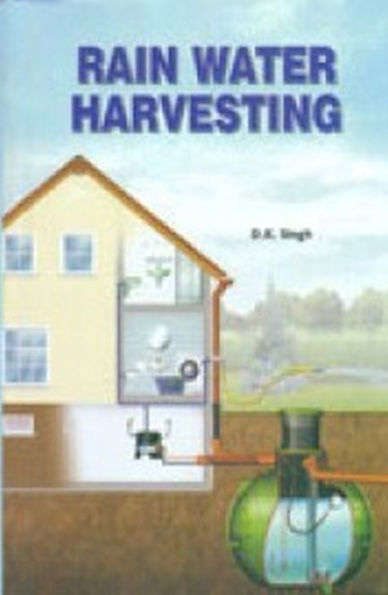Rainwater harvesting is the accumulating and storing of rainwater. It has been used to provide drinking water, water for livestock, water for irrigation or to refill aquifers in a process called ground-water recharge. Rain water collected from the roofs of houses, tents and local institutions can make an important contribution to the availability of drinking water. Water collected from the ground, sometimes from areas which are especially prepared for this purpose, is called Stormwater harvesting. In some cases, rain water may be the only available, or economical, water source. Rain water harvesting systems can be simple to construct from inexpensive local materials, and are potentially successful in most habitable locations. Roof rain water can be of good quality and may not require treatment before consumption. Although some rooftop materials may produce rain water that is harmful to human health, it can be useful in flushing toilets, washing clothes, watering the garden and washing cars; these uses alone halve the amount of water used by a typical home. Household rainfall catchment systems are appropriate in areas with an average rainfall greater than 200 mm (7.9 in) per year, and no other accessible water sources. This book provides a systemic approach to understand this subject. The book will be very helpful to the researchers, veterinarians, students and persons involved in this subject.
Rainwater harvesting is the accumulating and storing of rainwater. It has been used to provide drinking water, water for livestock, water for irrigation or to refill aquifers in a process called ground-water recharge. Rain water collected from the roofs of houses, tents and local institutions can make an important contribution to the availability of drinking water. Water collected from the ground, sometimes from areas which are especially prepared for this purpose, is called Stormwater harvesting. In some cases, rain water may be the only available, or economical, water source. Rain water harvesting systems can be simple to construct from inexpensive local materials, and are potentially successful in most habitable locations. Roof rain water can be of good quality and may not require treatment before consumption. Although some rooftop materials may produce rain water that is harmful to human health, it can be useful in flushing toilets, washing clothes, watering the garden and washing cars; these uses alone halve the amount of water used by a typical home. Household rainfall catchment systems are appropriate in areas with an average rainfall greater than 200 mm (7.9 in) per year, and no other accessible water sources. This book provides a systemic approach to understand this subject. The book will be very helpful to the researchers, veterinarians, students and persons involved in this subject.

Rain Water Harvesting
264
Rain Water Harvesting
264eBook
Related collections and offers

Product Details
| ISBN-13: | 9789353147143 |
|---|---|
| Publisher: | Arts & Science Academic Publishing |
| Publication date: | 06/30/2012 |
| Sold by: | Barnes & Noble |
| Format: | eBook |
| Pages: | 264 |
| File size: | 353 KB |
